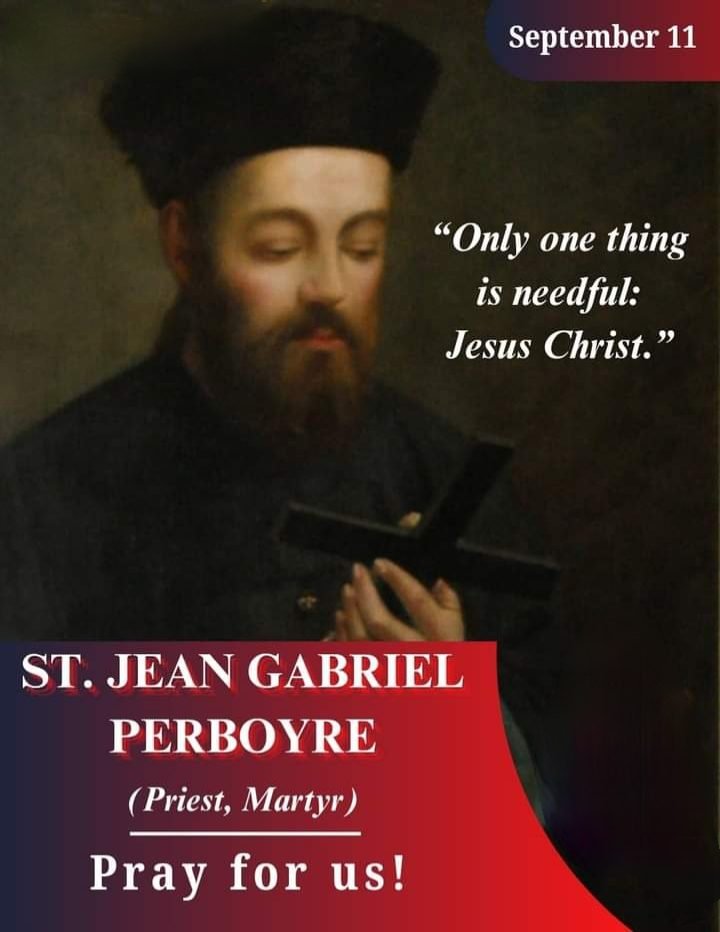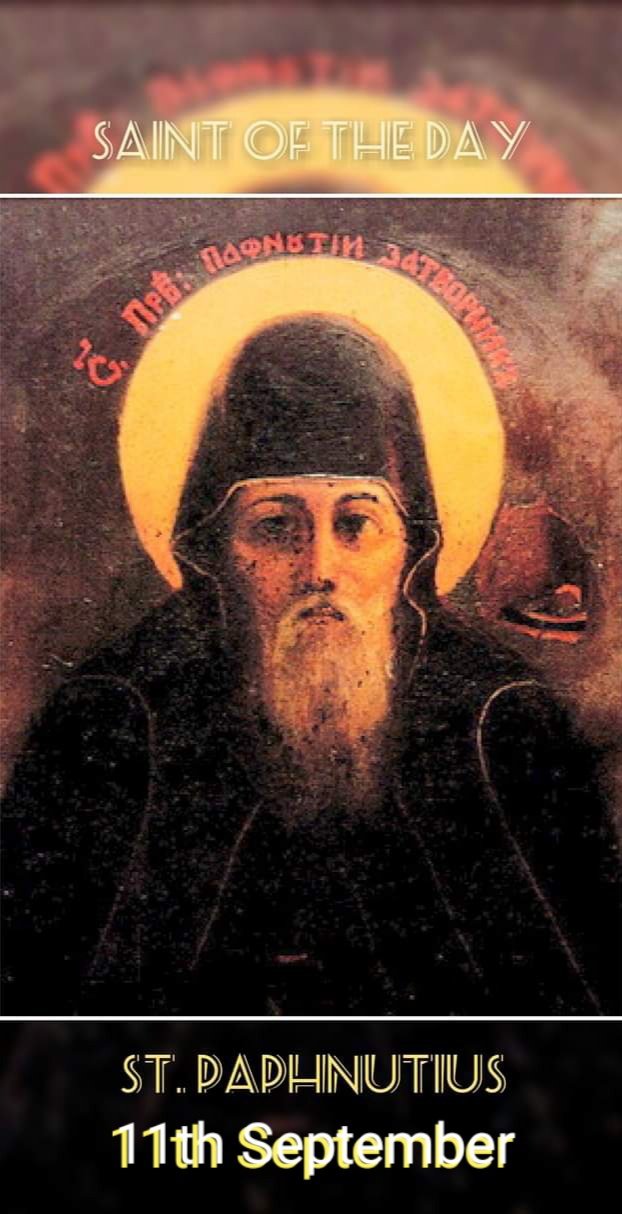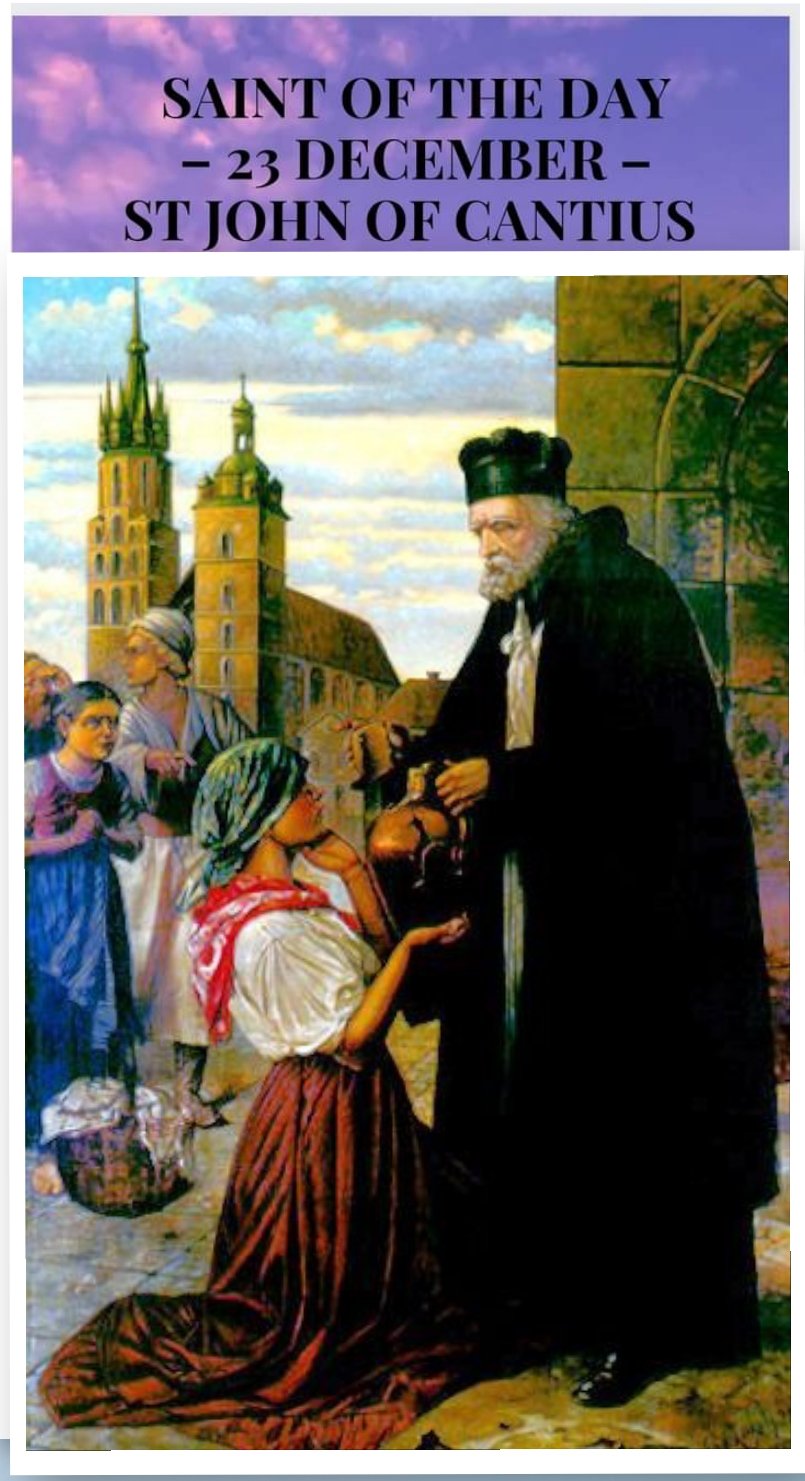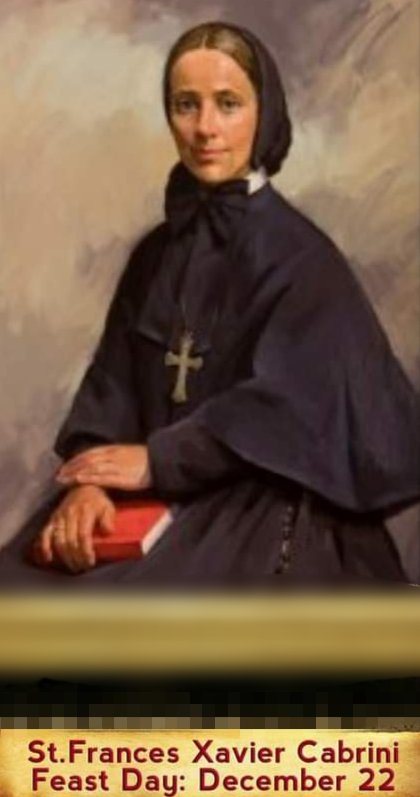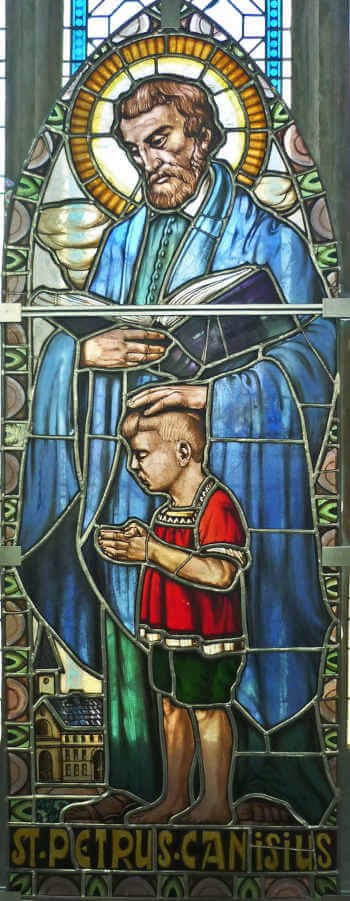
TODAY’S GOSPEL READING – 10 SEPTEMBER
September 10, 2024
Matthew 5:4
September 11, 2024FEAST OF SAINT PAPHNUTIUS
FEAST DAY – 11th SEPTEMBER
On Sept. 11, the Catholic Church honors Saint Paphnutius, an Egyptian monk who became a bishop, endured torture for the faith, and participated at the Ecumenical Council of Nicea in its confirmation of Christ’s divinity. While there is no record of Paphnutius’ early life, it is known that he – like many other men of his day – became a disciple of the monk Saint Anthony of the Desert, whose direction of a community of fellow hermits marked the beginning of traditional Christian monasticism.
Having spent several years pursuing spiritual illumination in the austerity of the desert under Anthony’s direction, Paphnutius was eventually chosen to become a bishop for the Upper Thebaid region. This placed him in direct conflict with Maximinus Daia, the Roman imperial ruler of Egypt and Syria from 305 to 313, who persecuted the Church in these regions and attempted to undermine it by strengthening the institutions of paganism.
Under Maximinus Daia’s rule, Paphnutius had his left leg partly mutilated and his right eye put out, in an unsuccessful effort to make him renounce the Catholic faith. Not yielding before torture, he was condemned to manual labor in the mines. Imperial policy toward Christians shifted between 311 and 313, in the midst of a power struggle between the various co-emperors of the time. The Emperor Constantine began to embrace the faith in 312, and he proclaimed its legality the following year, during which Maximinus Daia also died.
Since he survived the ordeal of persecution, Paphnutius was regarded with reverence by the first Christian leader of the Roman Empire. Constantine is said to have met frequently with the bishop from the Upper Thebaid, showing his respect by kissing the wound left by the loss of his eye.
The Egyptian bishop is also reputed to have played a role at the First Ecumenical Council, which condemned Arianism and promulgated the Nicene Creed. While celibate himself, Paphnutius successfully resisted an effort by some council participants to change the Eastern Churches’ traditions regarding married members of the clergy.
During the years of doctrinal confusion that followed the Council of Nicea, Paphnutius stood in defense of Christian orthodoxy alongside Saint Athanasius of Alexandria and other Church leaders who upheld the doctrine of Jesus’ eternal preexistence as God. In 335 Paphnutius joined a large group of Egyptian bishops in attending the regional Council of Tyre, where they found the majority of bishops adhering to the Arian heresy.
Paphnutius was especially distressed to see his fellow bishop Maximus of Jerusalem mingling with the Arian clergy, since Maximus, like himself, had once suffered torture rather than compromise his faith. The Egyptian bishop took his fellow confessor aside, and personally persuaded him to back St. Athanasius in the struggle against Arianism.
The year of St. Paphnutius’ death, like that of his birth, is unknown. He should not be confused with another prominent Egyptian monk of the same name (who appears in the “Conferences” of Saint John Cassian), nor is he the same whose martyrdom the Eastern churches commemorate on April 19.
PRAYER
O Holy St. Paphnutius, you suffered during your life and knowing how you understood suffering, we place our petitions for your intercession to the Lord on our behalf. .
Saint of the fallen, you died unnoticed, and suffered unaccounted martyrdom. You are sympathetic to needs of others, pray for us, now, and at moments when we are alone and forgotten. Amen
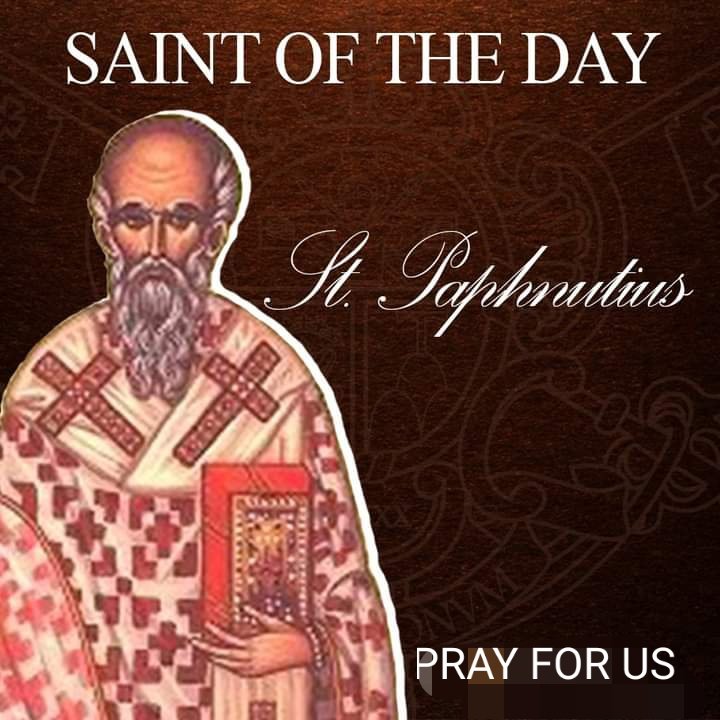
++++++++++++++++++++++++++++++++++
ALSO CELEBRATED:
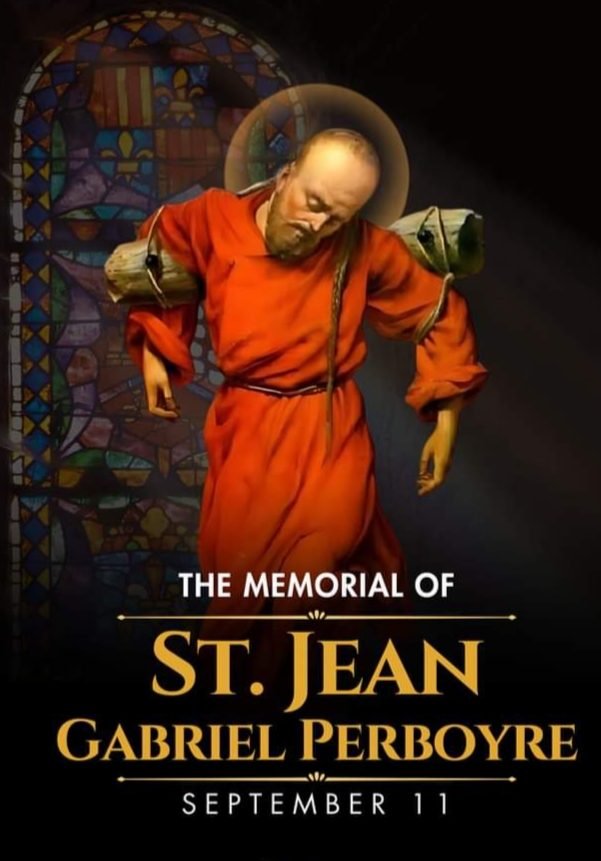
FEAST OF SAINT JOHN GABRIEL PERBOYRE
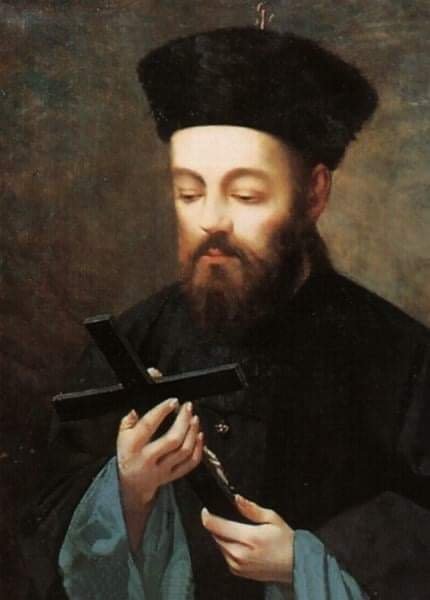
Born on January 6, 1802, in the south of France, John Gabriel Perboyre, C.M., was the second of eight children. Of the eight children in the Perboyre family, three sons became Vincentian priests, and two daughters joined the Daughters of Charity. Of these, two of the sons and one of the daughters gave their lives to the Chinese missions. Their uncle, Fr. Jacques Perboyre, CM, started a minor seminary, where John Gabriel and his brother Louis were students.
At the seminary, John Gabriel showed academic aptitude as well as a deep desire for holiness. His uncle implanted in him a desire to serve in the China missions. He professed permanent vows as a Vincentian in 1820, the same year that Francis Clet, CM, was martyred.
Arriving at the Vincentian Mother House in Paris, John Gabriel was assigned to teach young boys at the boarding school where he was a skilled and compassionate teacher. The next year, he was ordained a deacon and assigned to teach philosophy at Montdidier. He organized his students into groups that visited the imprisoned and the poor, distributing clothing and food to those in need.
John Gabriel was ordained a priest in 1826 in the chapel of the Daughters of Charity Motherhouse in Paris by Bishop William du Bourg (founding Bishop of St. Louis, MO) and was assigned to the theology faculty at the seminary of St. Flour.

His leadership skills were recognized by his superiors, and he was taken from the faculty and placed in charge of the boarding college at St. Flour. Though his work was successful, it took a toll on Fr. Perboyre’s health, and he asked to be relieved of this responsibility. In 1832, he was appointed Assistant Spiritual Director at the Congregation of the Mission’s seminary. He proved to be very skilled in this work, leading the new Vincentians to live more fully the spirit of St. Vincent de Paul. All the while, Fr. Perboyre’s desire to serve the missions in China never dimmed. His fervent prayer was answered, and he set sail for China, arriving in Macao in August 1835.
After a brief period of cultural initiation, Perboyre traveled to Hunan in central China. This was a dangerous expedition, because the Chinese empire forbade foreigners from entering the country and the penalty for violation was death. Fr. Perboyre traveled in disguise, ministering to Christians along the way to his destination, which he finally reached in late summer 1836. His home was the same house where Fr. Francis Regis Clet, CM, had been taken prisoner twenty-four years before. His territory covered nearly 50,000 square miles and contained six hundred Catholics. He was assisted by three Chinese Vincentian priests.
Faced with health challenges, Fr. Perboyre was forced to delay his official duties for a few months, but he recovered sufficiently to tour his entire district within a year. His love of God and his zeal for sharing the faith was contagious. In his eighteen-month assignment in this district, many whose faith had become lukewarm were renewed.
Fr. Perboyre’s next assignment was the mission of Chayuankou, in the province of Hubei. This large, active parish was comprised of two thousand Catholics. Despite the apparent success of his missionary activity, Fr. Perboyre suffered a period of extreme desolation in which he questioned his productivity and believed that God was displeased with his efforts. During a period of prayer, Perboyre experienced Jesus speaking to him from the cross, reassuring and encouraging him. This vision returned Perboyre to his previous zeal and strengthened him during his upcoming trials.
In 1839, tensions between the Chinese government and Christians were at a dangerous level. Perboyre and four of his companions barely escaped a raid by mandarins and soldiers who burned their compound and took some of the schoolboys and other Christians as prisoners. Fathers Perboyre and Wang, along with a group of Christians, hid during the days and traveled when the sun set. When soldiers discovered Fr. Perboyre’s hiding place, he was captured, bound with chains, stripped of most of his clothing, and led to where the other captives were being held.

During interrogation by the mandarin, Perboyre admitted that he was a European priest whose intent was to spread the Christian Gospel. Based on this, he was arrested and tortured before being transferred to a higher tribunal twelve hours’ journey from this prison. Interrogation there resulted by his again being transferred, bound by chains, this time to a district court, some two days’ journey away. Here, he was again questioned and tortured over a period of weeks. Eventually, Fr. Perboyre and the other prisoners were transferred to Wuchang, the site where Francis Clet had been martyred.
During repeated interrogation, Fr. Perboyre refused to reveal anything that could endanger other Christians. His captors brought numerous false charges against him and attempted to force him to commit sacrilege. Perboyre remained steadfast despite the physical torture that was inflicted upon him. This routine was repeated numerous times over the course of two months, and John Gabriel remained unwavering. He was condemned to death by strangulation, and his followers were sold as slaves.
Several weeks later, Fr. Perboyre’s execution was carried out on September 11, 1840. Members of the Catholic community arranged burial for Fr. Perboyre’s body. He was laid to rest on the Red Mountain and later reinterred at St. Lazare in Paris. He was beatified in 1889 by Pope Leo XIII and was canonized by Pope John Paul II on June 2, 1996. His feast day is September 11.
Saint John Gabriel Perboyre, C.M. , priest and martyr is pictured in his death scene. His betrayal and suffering mirrors Jesus’ own passion and death. He is a special model and patron to the Vincentians whose first foreign mission has been to China and her people.
PRAYER OF SAINT JOHN GABRIEL PERBOYRE
O my Divine Savior, transform me into Yourself. May my hands be the hands of Jesus. May my tongue be the tongue of Jesus. Grant that every faculty of my body may serve only to glorify You.
Above all, transform my soul and all its powers so that my memory, will and affection may be the memory, will and affections of Jesus.
I pray You to destroy in me all that is not of You. Grant that I may live but in You, by You and for You, so that I may truly say, with Saint Paul, “I live – now not I – But Christ lives in me”.
Source: Some Vincentian Missionaries.
